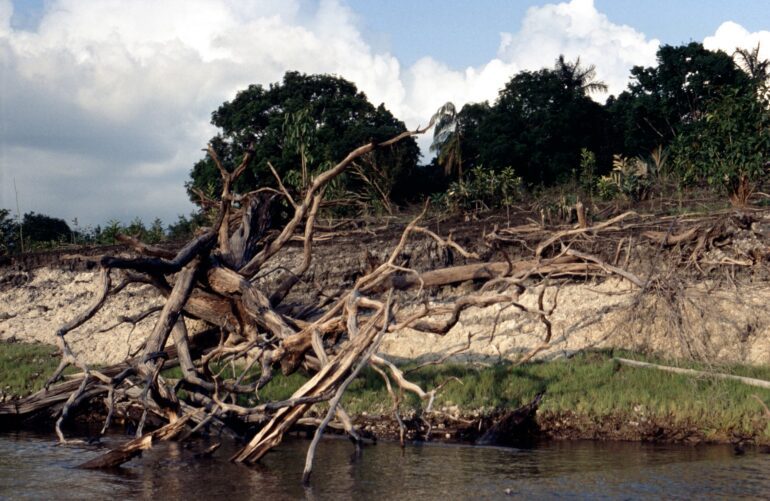TL;DR:
- AI-equipped “curupira” boxes combat deforestation in the Amazon.
- These small devices recognize chainsaw and tractor sounds to alert authorities.
- They provide real-time detection, unlike post-facto satellite data.
- Initial results are promising; seeking funding for expansion.
- A cost-effective solution with sensors costing €200-€300 each.
Main AI News:
In the heart of Brazil’s Amazon rainforest, a new and innovative initiative is taking root to combat the ever-encroaching threat of deforestation. Meet the ‘curupiras,’ small, artificially intelligent (AI) boxes securely fastened to the majestic tree trunks of the Amazon. These unassuming champions of conservation are armed with advanced sensors and software meticulously trained to identify the telltale sounds of destruction, from chainsaws to tractors, all in a relentless quest to protect this invaluable ecosystem.
The curupiras derive their name from a legendary forest creature in Brazilian folklore, known for its cunning tactics against hunters and poachers. Spearheaded by project manager Thiago Almeida, these AI boxes are becoming indispensable tools for scientists and environmentalists alike in their battle against the relentless forces of deforestation.
But how exactly has AI been harnessed to thwart illegal logging and preserve the Amazon’s pristine beauty? Thiago Almeida explains, “We captured the sounds of chainsaws and tractors echoing through the forest, compiling a comprehensive library of these ominous noises. This library served as the training ground for our AI, enabling it to distinguish these sounds from the natural cacophony of the rainforest, including the calls of animals, rustling vegetation, and the soothing patter of raindrops.”
Once a threat is identified, the curupiras rapidly relay critical information to a central command center, facilitating swift and decisive action by response teams. Raimundo Claudio Gomes of the Amazonas State University, a key figure behind this groundbreaking project, highlights the system’s distinctive advantage: “Unlike traditional satellite data, which only reveal deforestation after the fact, these curupiras can detect the inception of destruction in real-time.”
The curupiras may resemble small internet modems, but their wireless capabilities are nothing short of remarkable. They can transmit data over vast distances, up to one kilometer, via satellite to create a seamless network of protection. Having successfully completed its pilot phase, with ten prototype curupiras strategically placed in densely forested areas near Manaus, the project showcases the potential to safeguard the Amazon on an unprecedented scale.
Inspired by Indigenous folklore, the curupiras have already demonstrated their effectiveness in the fight against criminal activities. Early results, supported by funding from Brazilian company Hana Electronics, have yielded “very promising” outcomes, according to Gomes. The project team now seeks additional funding to expand the sensor network, envisioning a future where these vigilant guardians can even detect forest fires by identifying smoke and heat patterns.
Brazil’s President, Luiz Inacio Lula da Silva, has set forth an ambitious goal to eliminate illegal deforestation in the Amazon by 2030. This commitment stands in stark contrast to the policies of his far-right predecessor, Jair Bolsonaro, who oversaw a disheartening 75 percent increase in annual Amazon deforestation during his tenure.
Remarkably, the Manaus project distinguishes itself from other audio sensor-based systems used internationally by its cost-effectiveness. By avoiding the need for large antennas for data transmission, each curupira sensor comes at a reasonable price tag of €200-€300, making it a compelling solution for preserving one of Earth’s most vital and endangered ecosystems.
Conclusion:
The deployment of AI-powered “curupira” boxes in the Amazon signifies a significant step forward in the fight against deforestation. These cost-effective devices, capable of real-time threat detection, promise to bolster conservation efforts in one of the world’s most critical ecosystems. As funding pours in to expand this innovative technology, it opens up opportunities for AI-driven solutions in the broader environmental and conservation markets.

